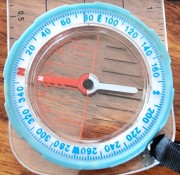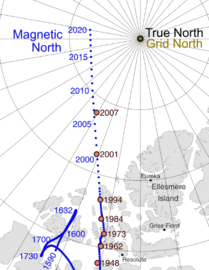Magnetism
There are several types of magnetism, but the two types we experience in everyday life are:
Permanent Magnets

Fridge magnets, compass needles and some door fasteners are all examples of permanent magnets.
Their magnetism comes from the "spin" of electrons. This isn't like the spinning of a basketball, but a special kind of built-in property that makes electrons act like tiny magnets.
When lots of these tiny magnets line up in certain materials, like iron, they combine to create one big magnet, and we get permanent magnets like on our refrigerator doors.
This magnetic property cause them to attract or repel each other.
But usually they don't align, or everything around us would be magnetic, including our bodies!
Why not?
First let's ignore protons as their magnetic field is much weaker (1/658) than an electron's. So electrons are the main contributors to magnetism in materials like permanent magnets.
And in a typical atom the electrons magnetic fields are mostly paired up so they cancel each other out.
But when there is a single unpaired electron in an outer shell then the whole atom can have a small magnetic field.
But next we need the atoms to point in the same direction! Which they usually don't.
But in some metals (iron, nickel, cobalt and some alloys) the mutual attraction is strong enough that they do align with each other!
These materials are called ferromagnetic
But there is one more thing to get in the way: the alignment is often only within regions called magnetic domains: small regions where the atoms' magnetic fields are aligned
And the domains don't usually align.
This can be fixed using a strong magnetic field to force them to point in one direction. In some cases this new alignment stays even after the applied magnetic field is taken away.
And we finally get our permanent magnet.
Some can be so strong that they will squash your finger if it gets in between them.

Poles
The north pole of the magnet points to the Magnetic North Pole currently in the Arctic Ocean.
Like poles repel, opposites attract:
- north poles repel north poles
- south poles repel south poles
- north poles attract south poles
- south poles attract north poles
The force typically gets weaker as the distance between the magnets increases."
Conclusion
So permanent magnets are the special circumstance where the electrons tiny magnetic fields all contribute to a much larger field without canceling each other out too much.
(Almost as hard as getting people to all agree with each other.)
Electromagnets

Have you ever seen a giant magnet pick up scrap metal? That's an electromagnet at work.
Electromagnets are special because they can be turned on and off!
They work because moving electric charges, like electrons flowing in a wire, create a magnetic field.
When we loop the wire into a coil the magnetic field becomes stronger, and the more loops, the stronger the field.
But why does a moving charge create a magnetic field?
It has to do with Einstein's theory of relativity and something called length contraction.
When a charged particle moves at high speed, it sees the charges around it as being closer together than usual.
This changes how it experiences electric forces. Some areas seem to have more charge, others have less, all depending on how the particles are moving relative to each other.
We observe this as magnetic force.
And we can control it! That’s how we get electric motors, generators, and many other wonderful things.